.
How does regular vibration analysis contribute to preventing equipment failures and optimizing maintenance schedules in industrial balancing?
Regular vibration analysis plays a crucial role in maintaining the health of industrial equipment by identifying potential issues before they escalate into costly failures. Vibration analysis works by detecting unusual patterns or shifts in the equipment’s operation, which can indicate early signs of problems such as rotor misalignment, bearing wear, or structural imbalances. By addressing these issues proactively, facilities can prevent unexpected breakdowns and extend the overall lifespan of the machinery.
Through consistent monitoring, vibration analysis also helps in optimizing maintenance schedules. Rather than relying solely on time-based maintenance, facilities can use data-driven insights from vibration analysis to perform maintenance only when necessary. This predictive maintenance approach ensures that equipment is serviced at the right intervals, preventing over-maintenance and reducing unnecessary downtime.
For components that operate at high speeds, such as turbines or compressors, vibration analysis is especially valuable, as even minor imbalances can lead to significant wear if left unaddressed. In industrial balancing, this technology not only improves equipment performance and reliability but also reduces maintenance costs by minimizing the risk of severe damage. Overall, regular vibration analysis enhances operational efficiency, optimizes maintenance schedules, and prevents costly disruptions in industrial operations.
